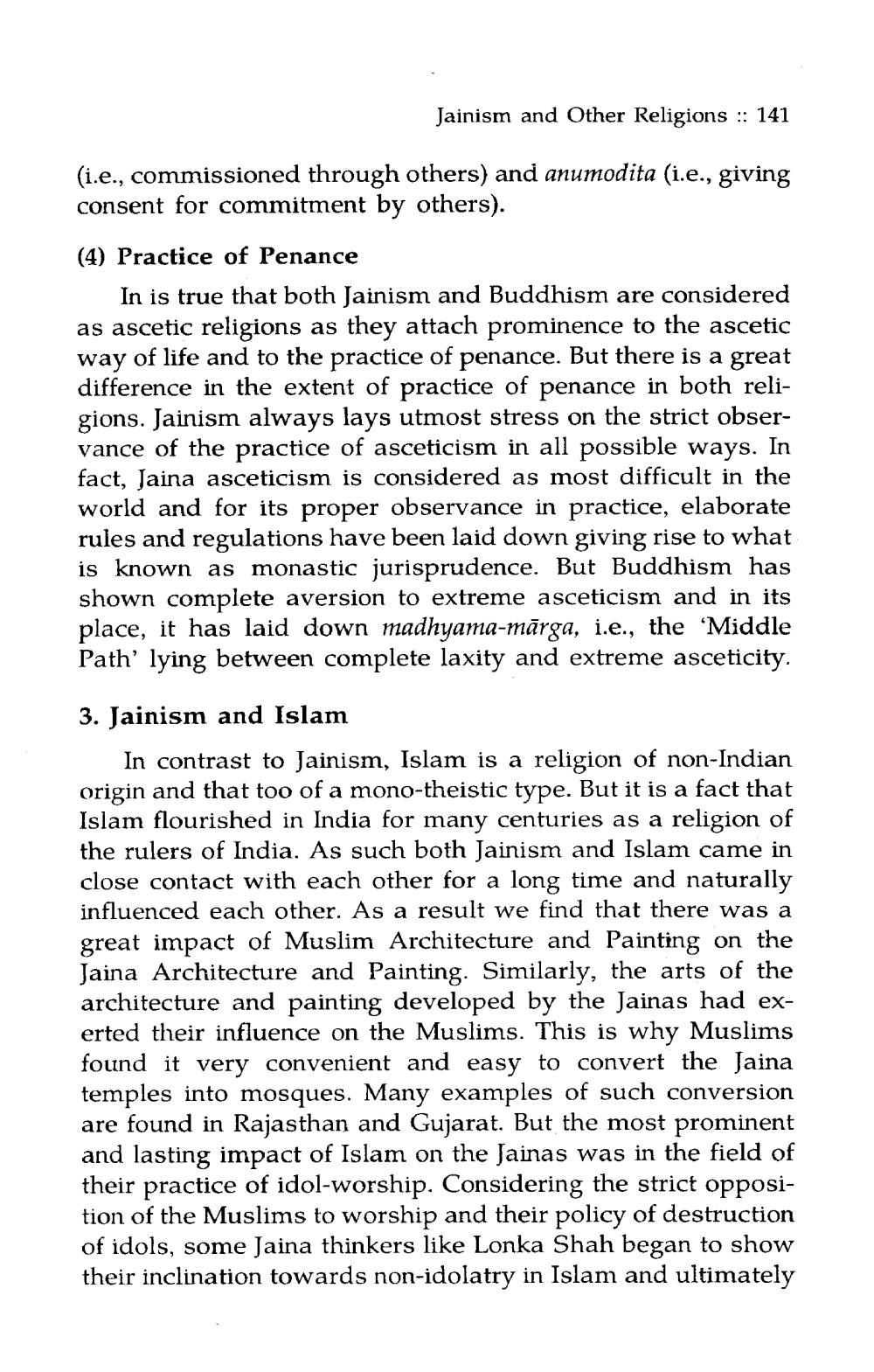________________
Jainism and Other Religions :: 141
(i.e., commissioned through others) and anumodita (i.e., giving consent for commitment by others). (4) Practice of Penance
In is true that both Jainism and Buddhism are considered as ascetic religions as they attach prominence to the ascetic way of life and to the practice of penance. But there is a great difference in the extent of practice of penance in both religions. Jainism always lays utmost stress on the strict observance of the practice of asceticism in all possible ways. In fact, Jaina asceticism is considered as most difficult in the world and for its proper observance in practice, elaborate rules and regulations have been laid down giving rise to what is known as monastic jurisprudence. But Buddhism has shown complete aversion to extreme asceticism and in its place, it has laid down madhyama-mārga, i.e., the Middle Path' lying between complete laxity and extreme asceticity.
3. Jainism and Islam
In contrast to Jainism, Islam is a religion of non-Indian origin and that too of a mono-theistic type. But it is a fact that Islam flourished in India for many centuries as a religion of the rulers of India. As such both Jainism and Islam came in close contact with each other for a long time and naturally influenced each other. As a result we find that there was a great impact of Muslim Architecture and Painting on the Jaina Architecture and Painting. Similarly, the arts of the architecture and painting developed by the Jainas had exerted their influence on the Muslims. This is why Muslims
und it very convenient and easy to convert the Taina temples into mosques. Many examples of such conversion are found in Rajasthan and Gujarat. But the most prominent and lasting impact of Islam on the Jainas was in the field of their practice of idol-worship. Considering the strict opposition of the Muslims to worship and their policy of destruction of idols, some Jaina thinkers like Lonka Shah began to show their inclination towards non-idolatry in Islam and ultimately




